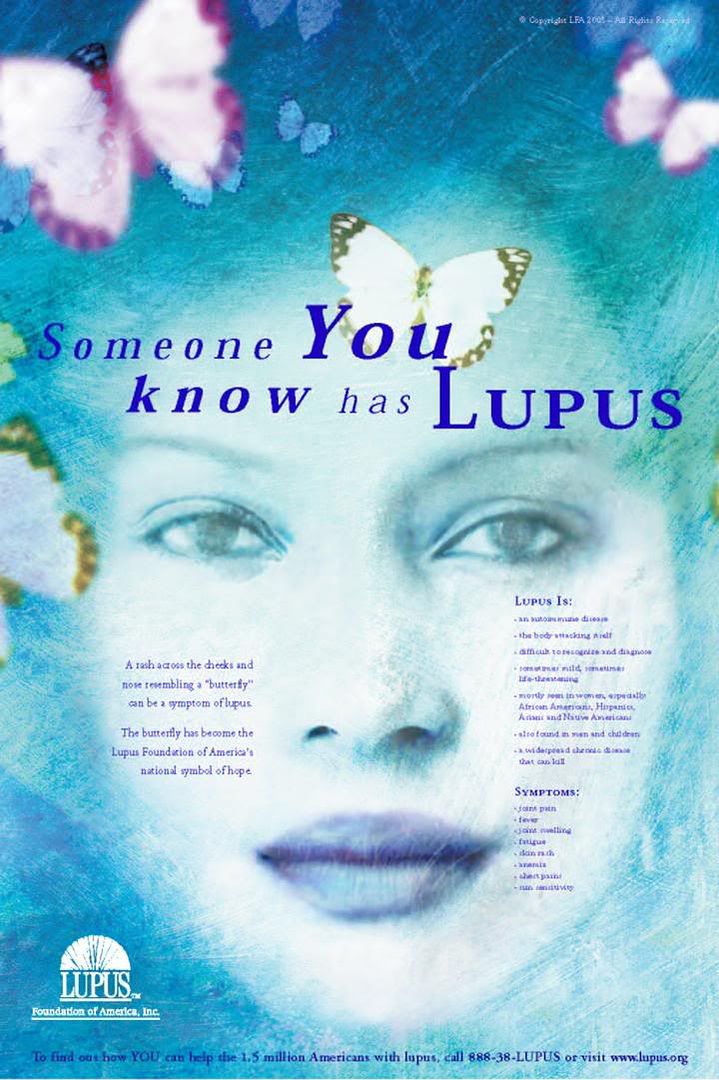 |
|
|
A potential therapy for lupus nephritis when other medications fail Saturday, September 01, 2007 From Arthritis & Rheumatism, April 2007Lupus nephritis (kidney disease) is a serious complication of lupus. Researchers in Sweden tested to see if providing rituximab (Rituxan) in combination with cyclophosphamide (CYC) would be a safe and effective therapy for lupus nephritis patients who had previously not responded to CYC. The researchers found that rituximab, in combination with CYC, was effective in treating lupus nephritis in patients who had previously not responded to CYC. Read more > Labels: CYC, kidney, lupus neprithis, research, rituximab ~~~ Results of a preliminary study of rituximab for difficult NPSLE From the Annals of the Rheumatic Diseases, April 2007 Lupus may affect the central nervous system (NPSLE), with estimates varying widely (from 12% to 75%) for the number of lupus patients who experience minor or moderate flares in the nervous system. Researchers from Japan found that the cancer drug rituximab was effective in treating the NPSLE symptoms in a small group of 10 patients. Read more Labels: nervous system, NPSLE, research ~~~ Novel antibodies as markers for lupus activity in the nervous system Novel antibodies as markers for lupus activity in the nervous system From the Annals of the Rheumatic Diseases, April 2007' Diagnosing lupus can be difficult because the symptoms are sometimes similar to those of other conditions. Researchers hoped to learn if antineuronal antibodies (anti-Ns) could be used to diagnose central nervous system involvement in lupus (NPSLE). After looking at blood samples from 198 people, patients who had been diagnosed with lupus had higher levels of anti-Ns in their blood samples than was seen in other study participants. Read more > Labels: nervous system, novel, research ~~~ Lupus and HPV Lupus and HPV From Arthritis & Rheumatism. May 2007 Previous studies have suggested that women with lupus may not be able to produce an effective immune response to HPV. Researchers wanted to determine whether lupus patients are at enhanced risk of HPV infections. In this study of 112 women, researchers found that the women with lupus had a very high rate of infection with a particular sub-type of HPV-16, and those lupus patients who had large amounts of this virus had a higher rate of abnormal cervical smears. Read more > ~~~ Anti-Sm antibodies and lupus disease activity may be important in predicting outcomes Anti-Sm antibodies and lupus disease activity may be important in predicting outcomes From Lupus, March 2007 It is still not possible to predict in advance who will develop lupus and, what course each patient's disease may take. The researchers hoped to sort through several of the probable contributing factors that could help predict the progression and severity of disease activity among lupus patients.Researchers in Canada studied the records of 330 patients from three different racial and ethnic groups who were diagnosed with lupus in Manitoba, Canada, over a period spanning more than 20 years and noted a number of differences among the three ethnic groups. Read more > ~~~ At risk for thrombosis: FXII autoantibodies and the antiphospholipid syndrome At risk for thrombosis: FXII autoantibodies and the antiphospholipid syndrome From the Annals of the Rheumatic Diseases, April 2007 People with lupus who have antiphospholipid antibodies (aPL) are at risk for blood clots, including heart attacks, strokes, clots in the legs, lungs, or other organs, and pregnancy complications. Researchers for this study of 127 patients found antibodies to Factor XII (FXII), a protein that plays a role in preventing blood clots, were present in 40% of the lupus patients as opposed to only 7% of the healthy people. Read more > Labels: research, thrombosis ~~~ Low bone density in African American women with lupus Low bone density in African American women with lupus From Arthritis & Rheumatism, May 2007 Women with lupus are at risk for osteoporosis and fractures. It is estimated that as many as 25% of pre-menopausal women with lupus may have osteopenia, or low bone mineral density (BMD), an early sign of osteoporosis. The researchers wanted to determine if African American women with lupus, like their Caucasian counterparts, were at risk for low bone density. In this study of 298 women, the researchers found that African American women were much more likely to have low BMD in the lower back (or lumbar spine) than Caucasian women. Read more ~~~ |
.:Find Me:. If you interested in content, please contact the Writer .:Want to Joint ?:. If you want to know more about lupus surferer's activities and want to donor your help and money, go here Need more consult ?, go here .:acquaintances:.
The Enterprise .:New Book:. .:talk about it:.
.:archives:.
.:Link-link website Lupus:.
Lupus Org .:credits:.
|